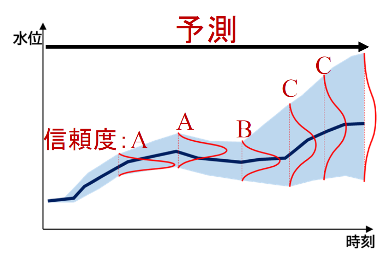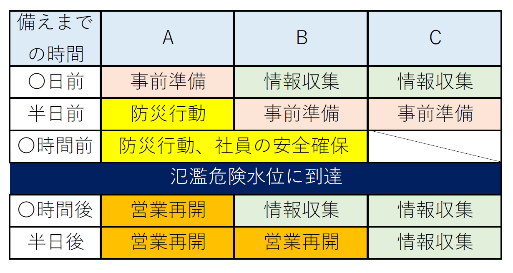Deterministic flood forecasting always has accuracy issues due to uncertain elements such as an uneven spatiotemporal distribution of precipitation intensity and the nonlinearity of the rainfall runoff process. For this reason, ensemble forecasting has been introduced in recent years.
However, this approach also has challenges because ensemble flood forecasting interprets a set of ensemble members in terms of width, mean value, or other ways. For instance, ensemble forecasts can be considered not so helpful for users to take timely actions or make decisions. Unless ensemble forecasts are provided with quantitative uncertainty, they will remain trapped in a mere discussion of “hit or missed” and will not be recognized as an effective tool for decision-making.
To develop a method to support various stakeholders in making timely decisions about preparation for and response to floods by providing flood forecasts with likelihood levels. The method will, for instance, assist manufacturers in moving up the production schedule and arranging alternative supply chains and workforce allocation, as well as help farmers plan early harvesting and strategic farmland protection.


None
FY2024-FY2026
| Chief Researcher | KURIBAYASHI Daisuke |
| Senior Researcher | MIYAMOTO Mamoru |
1. Improvement of the flood forecasting model by adding an ensemble particle filter to provide probability distribution information
To provide ensemble flood forecasting results as probability distribution information, we will conduct numerical experiments to identify the appropriate number of resamplings and optimal weighting according to likelihood levels, which are parameters of the particle filter. Using these parameters, we will determine the number of particles needed to produce reliable probability distribution information. Furthermore, we will conduct analyses about the lead time, for example, testing various lengths of the lead time for different basins to determine how far ahead in time we should perform forecasting.
2. Quantification of forecasting uncertainty using the variance indicator of the probability density function
We will develop a fitting method and a distribution system selection method to convert the distribution of forecasts (water levels or flow rates) composed by ensemble members into a probability density function. In addition, we will quantify uncertainty based on the temporal changes in the variance indicator and confidence interval of the probability density function.
3. Presentation of forecasting information transmission methods and response actions for different information recipients
We will conduct hearings with forecasting information recipients, such as corporations and municipalities, and study types of uncertainty information that meet their needs and formats to provide such information that help them make timely decisions. We will also illustrate a timeline of appropriate response actions before and after a disaster with changes in uncertainty information.